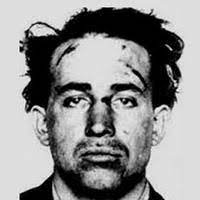
Willie Altieri
Summary
Name:
Nickname:
Two‑Knife / Two GunYears Active:
1919 - 1928Status:
DeceasedClass:
MurdererVictims:
12+Method:
Stabbing / Strangulation / ShootingNationality:
USA
Willie Altieri
Summary: Murderer
Name:
Willie AltieriNickname:
Two‑Knife / Two GunStatus:
DeceasedVictims:
12+Method:
Stabbing / Strangulation / ShootingNationality:
USAYears Active:
1919 - 1928bio
Very little is known about the early life of Willie "Two-Knife" Altieri—his place of birth, family background, and even his real name remain unconfirmed in historical records. What is known is that he operated as a chief enforcer for Frankie Yale, one of the most feared Italian-American gang bosses of New York during the 1920s.
Described as standing 5'7" tall, weighing 170 lbs, with blond hair, blue eyes, and "soft, feminine" hands, Altieri maintained an eerie calm—often seen using his knives to clean his fingernails. He wore his signature weapons—two knives in leather scabbards around his waist—even while he slept. His preference for up-close, brutal killings earned him the nickname “Two-Knife.”
murder story
Willie “Two‑Knife” Altieri earned his reputation as one of the most feared enforcers of 1920s New York City, serving as the chief executioner for Frankie Yale’s Italian-American “Black-Hand” gang. His nickname originated from a gruesome and methodical preference: he carried two sharp knives at his waist—sometimes even sleeping with them—and used them with brutal precision to dispatch victims. According to descriptions, Altieri would often thrust both blades into his targets, embodying the deadly efficiency.
One of the earliest recorded murders attributed to Altieri occurred in 1919. Yale tasked him with eliminating a suspected informant within the gang. In a chilling display of intimidation and terror, Altieri stabbed the victim in the torso with both knives and then shattered the blades inside the body. He retrieved the broken handles and presented them to Yale, who mounted them on a plaque in his office.
Altieri’s enforcer role intensified during violent clashes between Italian-American gangs and the rival Irish White Hand gangs. During this turbulent era, gang leader Bill Lovett — head of the White Hand Gang — was murdered in 1923, an act widely attributed to Altieri himself. Historical records indicate that Altieri used a butcher’s cleaver in the killing, emblematic of the ethnic and criminal warfare that defined New York's waterfront.
Altieri’s notoriety made him a target as well. In a rare miscalculation, the White Hand Gang attempted to assassinate him in retaliation for the suspected killing of their member, Petey Behan. The attempt failed fatally, however, when their operatives mistakenly killed gang associates instead. In turn, Vincenzo Gibaldi—later infamous as Jack “Machine Gun Jack” McGurn—brought revenge under Frankie Yale’s vengeful approval, executing the three hitmen. Altieri escaped this ambush by leaping through a window.
The turning point in Altieri’s criminal arc came with the murder of his boss, Frankie Yale, on July 1, 1928. After Yale was gunned down on a Brooklyn street—an act believed linked to a falling out with Chicago gang boss Al Capone—Altieri vanished entirely from public and criminal records.